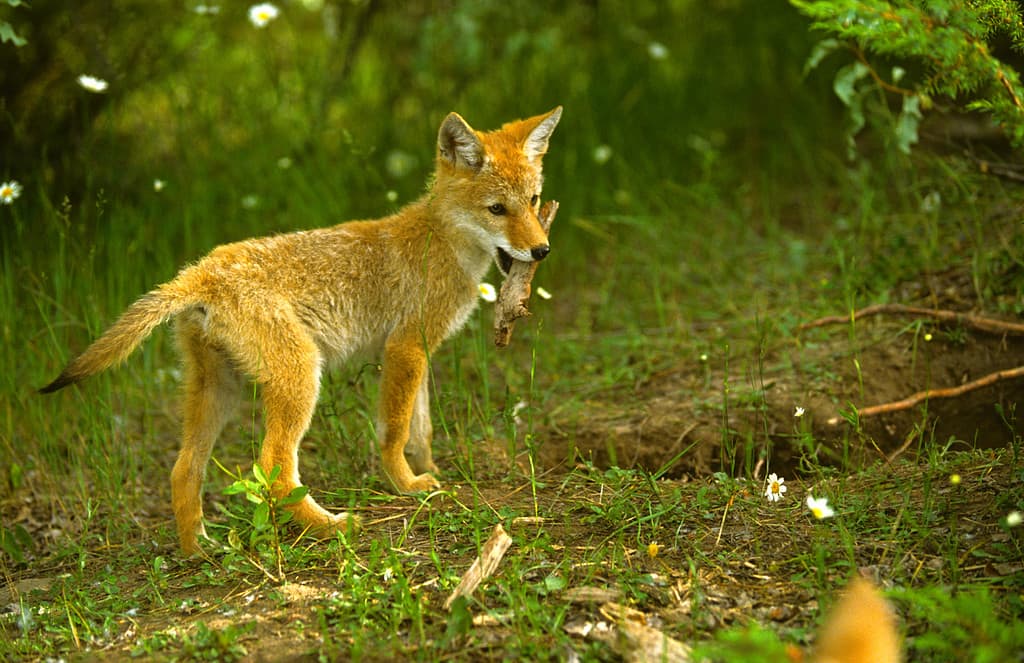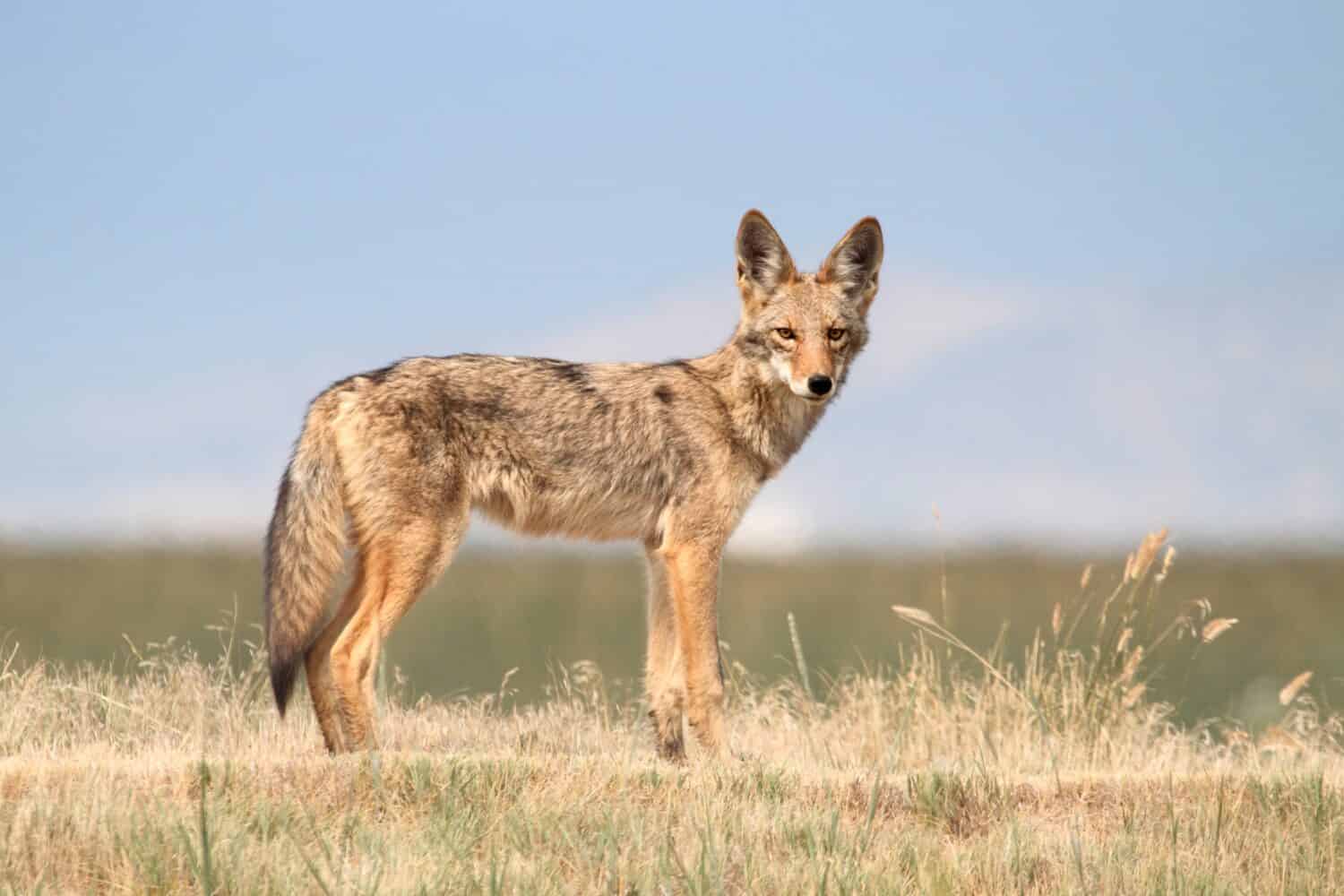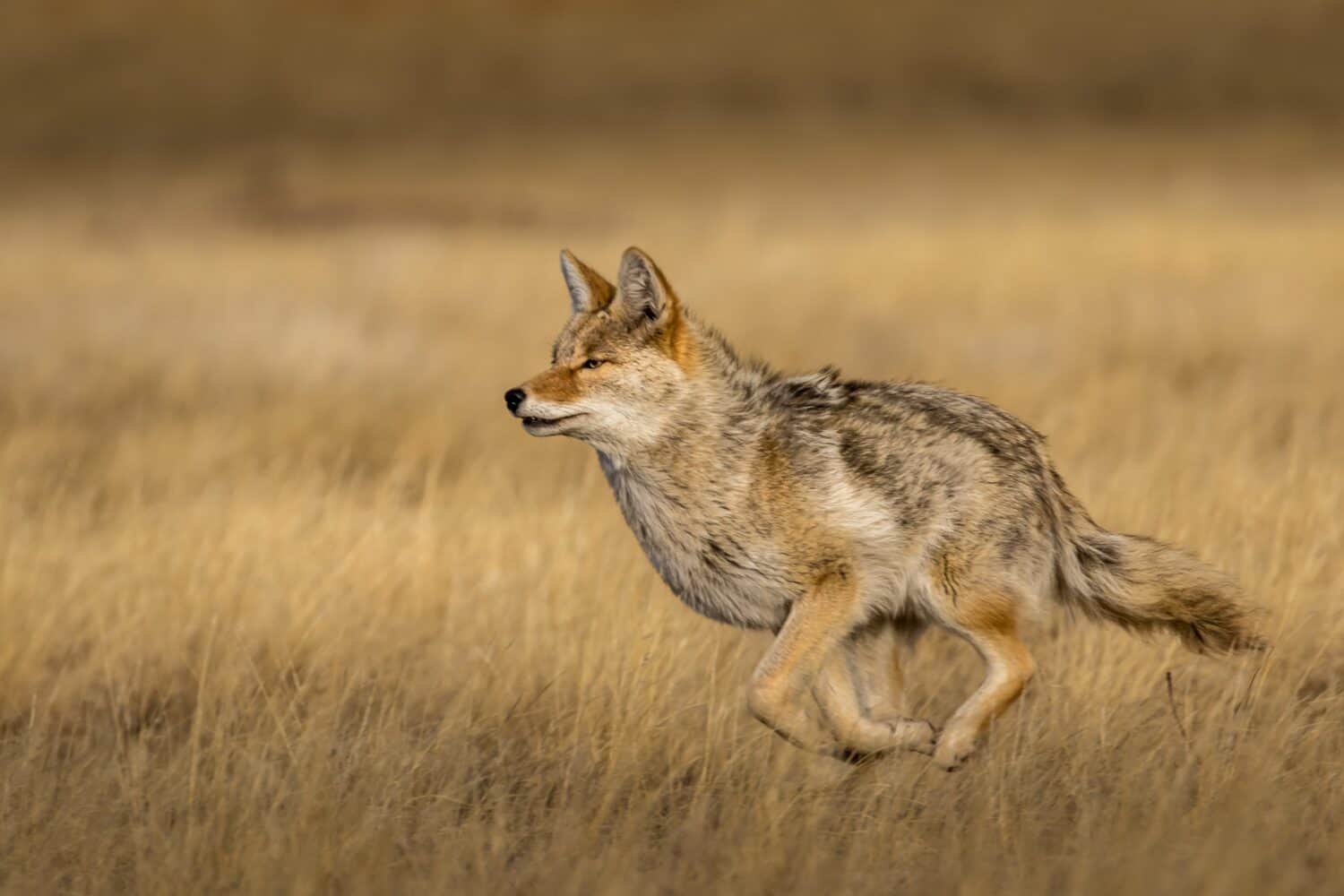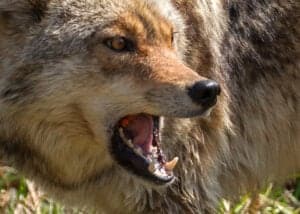Coyotes, those wily and adaptable members of the dog family, have intrigued humans for centuries with their elusive behavior and remarkable survival skills. One aspect of their biology that has always piqued my curiosity is their speed. In this article, we will explore coyotes’ physiology, top speeds, various types, geographical locations, habits, and alimentation.
Physiology
Coyotes, scientifically known as Canis latrans, are well-built for both speed and endurance. They typically weigh between 20 to 50 pounds, with a body length of 32 to 37 inches and a tail that adds another 16 to 20 inches. Their slender, athletic build, strong legs, and keen senses make them formidable hunters and runners.

Coyotes typically grow to be between 20 to 50 pounds, with a body length of 32 to 37 inches and a tail that adds another 16 to 20 inches.
©Tom Tietz/iStock via Getty Images
Top Speeds
Coyotes are known for their impressive bursts of speed when chasing prey or evading predators. While they may not match the top speeds of larger predators like cheetahs, they are no slouches, either. On average, coyotes can run at speeds of 40 to 45 miles per hour (64 to 72 kilometers per hour) for short distances. This agility and swiftness make them successful hunters of small mammals like rabbits and rodents.
Types
Coyotes are highly adaptable canids that have managed to thrive across a range of environments, resulting in different types or regional variations based on their habitats and evolutionary influences. One well-known type is the Eastern Coyote. Found primarily in the eastern United States and parts of Canada, these coyotes are notably larger than their western counterparts. This size difference is due in part to their interbreeding with wolves, which has introduced wolf genes into their population. As a result, Eastern coyotes can take down larger prey and exhibit behaviors that are more similar to those of wolves.
In contrast, the Western Coyote is found in the western United States. They are more similar in size and behavior to the typical coyote, with a slender build and a keen ability to hunt small mammals and birds. They have a generally smaller stature compared to their Eastern relatives.
Another distinct type is the Mexican Coyote, inhabiting Mexico and parts of the southwestern United States. These coyotes are often smaller in size and may have a more reddish or yellowish coat compared to other types. They are well-adapted to their arid and desert environments.
In the southern United States, particularly in Texas, you can find the Texas or Brush Coyote. These coyotes have adapted to the dense vegetation of their habitat and are typically smaller in size compared to their counterparts in other regions.
Additionally, the Plains Coyote is prevalent in the central plains of North America. These coyotes have specialized to thrive in open landscapes and are known for their adaptability to the vast prairies and grasslands of the region.

The Western Coyote is found in the western United States. In general, they have a smaller stature than their Eastern relatives.
©Steve Byland/Shutterstock.com
Alimentation
One of the coyotes’ most notable characteristics is their opportunistic feeding behavior. They are primarily carnivorous, preying on small mammals like rabbits and rodents. Moreover, they also consume birds, insects, fruits, and even carrion when available. This adaptability in their diet allows them to survive in a wide range of ecosystems, from deserts to urban areas.
Habits
Coyotes are highly adaptable and versatile carnivores known for their complex and varied habits. Coyotes are generally solitary animals, but they can form family groups or small packs, especially during the breeding season. These groups typically consist of a mated pair and their offspring. They have a strong social structure within these family units, with defined roles and hierarchies.
These canids are known for their vocalizations, which include howling, yipping, and barking. Howling, in particular, serves several purposes, such as communication with other coyotes, marking territory, and coordinating within family groups. They usually vocalize at night, especially during the breeding season.
Coyotes are highly adaptable to human-altered landscapes, which has led to their presence in urban and suburban areas. They are primarily nocturnal but can also be active during the day, depending on factors like food availability and human activity. This adaptability to human environments has sometimes led to conflicts with people, particularly regarding livestock predation and pet safety.
Their territorial nature, scavenging behavior, and ability to exploit various food sources make coyotes successful survivors in diverse habitats. Their habits have allowed them to thrive in North America, from the deserts of the southwestern United States to the suburbs of major cities.

One of the most notable characteristics of coyotes is their opportunistic feeding behavior.
©Dennis Laughlin/Shutterstock.com
Conclusion
All in all, coyotes are fascinating creatures with impressive physical attributes, including their speed and agility. Their adaptability has enabled them to carve out a niche in a wide range of habitats across North America. Understanding their physiology, habits, and alimentation helps us appreciate the remarkable survival skills of these wily canines.
Thank you for reading! Have some feedback for us? Contact the AZ Animals editorial team.







